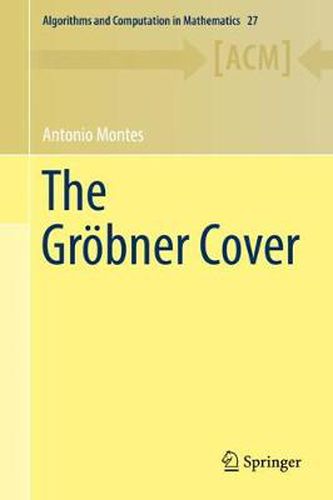Readings Newsletter
Become a Readings Member to make your shopping experience even easier.
Sign in or sign up for free!
You’re not far away from qualifying for FREE standard shipping within Australia
You’ve qualified for FREE standard shipping within Australia
The cart is loading…






This title is printed to order. This book may have been self-published. If so, we cannot guarantee the quality of the content. In the main most books will have gone through the editing process however some may not. We therefore suggest that you be aware of this before ordering this book. If in doubt check either the author or publisher’s details as we are unable to accept any returns unless they are faulty. Please contact us if you have any questions.
This book is divided into two parts, one theoretical and one focusing on applications, and offers a complete description of the Canonical Groebner Cover, the most accurate algebraic method for discussing parametric polynomial systems. It also includes applications to the Automatic Deduction of Geometric Theorems, Loci Computation and Envelopes.
The theoretical part is a self-contained exposition on the theory of Parametric Groebner Systems and Bases. It begins with Weispfenning’s introduction of Comprehensive Groebner Systems (CGS) in 1992, and provides a complete description of the Groebner Cover (GC), which includes a canonical discussion of a set of parametric polynomial equations developed by Michael Wibmer and the author.
In turn, the application part selects three problems for which the Groebner Cover offers valuable new perspectives. The automatic deduction of geometric theorems (ADGT) becomes fully automatic and straightforward using GC, representing a major improvement on all previous methods. In terms of loci and envelope computation, GC makes it possible to introduce a taxonomy of the components and automatically compute it. The book also generalizes the definition of the envelope of a family of hypersurfaces, and provides algorithms for its computation, as well as for discussing how to determine the real envelope.
All the algorithms described here have also been included in the software library grobcov.lib implemented in Singular by the author, and serve as a User Manual for it.
$9.00 standard shipping within Australia
FREE standard shipping within Australia for orders over $100.00
Express & International shipping calculated at checkout
This title is printed to order. This book may have been self-published. If so, we cannot guarantee the quality of the content. In the main most books will have gone through the editing process however some may not. We therefore suggest that you be aware of this before ordering this book. If in doubt check either the author or publisher’s details as we are unable to accept any returns unless they are faulty. Please contact us if you have any questions.
This book is divided into two parts, one theoretical and one focusing on applications, and offers a complete description of the Canonical Groebner Cover, the most accurate algebraic method for discussing parametric polynomial systems. It also includes applications to the Automatic Deduction of Geometric Theorems, Loci Computation and Envelopes.
The theoretical part is a self-contained exposition on the theory of Parametric Groebner Systems and Bases. It begins with Weispfenning’s introduction of Comprehensive Groebner Systems (CGS) in 1992, and provides a complete description of the Groebner Cover (GC), which includes a canonical discussion of a set of parametric polynomial equations developed by Michael Wibmer and the author.
In turn, the application part selects three problems for which the Groebner Cover offers valuable new perspectives. The automatic deduction of geometric theorems (ADGT) becomes fully automatic and straightforward using GC, representing a major improvement on all previous methods. In terms of loci and envelope computation, GC makes it possible to introduce a taxonomy of the components and automatically compute it. The book also generalizes the definition of the envelope of a family of hypersurfaces, and provides algorithms for its computation, as well as for discussing how to determine the real envelope.
All the algorithms described here have also been included in the software library grobcov.lib implemented in Singular by the author, and serve as a User Manual for it.